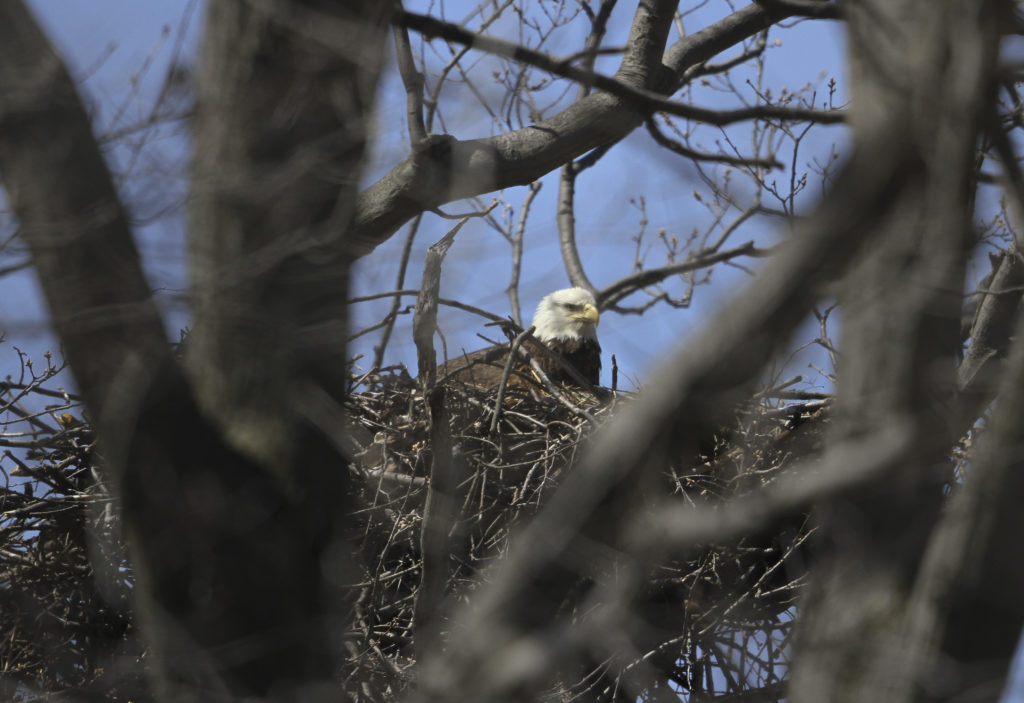Creature Feature

Eagle Nesting Time
By Wayne Bierbaum
It is kind of fun to watch animals through spy cams. Last week, I searched online and found over 12 nesting cameras available to watch. Several bird cams revealed adult bald eagles completely covered in snow while sitting on eggs.
Eagles are one of the few North American birds that nest in the winter (great horned owls are another example of winter nesters). It is not uncommon for an eagle to need to hunker down in the nest while it snows or freezing rain falls. The eagle’s resilience is amazing. But why start a bird family in the harsh winter?
There are two reasons for the cold start. One is that from the time an eagle egg is laid to the time the young eaglets leave the nest is about 116 days. The fledged eagles learn to hunt when there is still plenty of fish to catch. If the eagles started nesting in May, then fledging would be in mid- to late-September and the cold fall weather chases fish deeper—the young would not have enough time to become versatile hunters.
The second reason for nesting in the winter is that by the time the young need larger amounts of food, the spring fish and duck migrations have started, so finding food is easier.
The Raptor Resource Project lists the approximate dates of egg laying for each state in the U.S. Florida eagles have the earliest nesting date, starting in October. In our area, egg laying begins in early January. In Maine, it’s late January. Only in Alaska does egg laying start in early April. Interestingly, several salmon runs occur in late September and the fish are still around into October.
The winter nesting is hard on the female as she spends the most time incubating the eggs. It takes 35 days of incubation for the eggs to hatch, which means the male has to be very attentive to the needs of the brooding female. Eagles have loud shrill voices and when the mother is hungry or wants to leave the nest, she lets everyone know.
The young birds also have a tough start. Eagles typically lay two eggs but up to five eggs have been reported. When there are three or more eggs the last one hatched becomes the runt and gets picked on. Sometimes they die from parental neglect or sibling trauma. Usually, only the first two hatched do well.
However, that is not always the case. Last year, one of the eagle pairs at Blackwater National Wildlife Sanctuary hatched four eggs and successfully raised all four eaglets. That eagle pair has the largest nest in the park and as the young grew, it became very crowded. The young birds could be seen standing around the rim of the nest, trying to make room. The parents were very busy feeding them, too.
As the young learn how to fly, the parents will continue to feed them and use the nest as a feeding base. Later, the adults will allow the young to steal food from them and eventually refuse to feed them. They are then on their own.
Eagles are easily stressed by human encroachment and do not usually nest near areas with high human activity. It is best to give nesting eagles a wide berth because a stressed eagle parent has been known to abandon an egg.
Our local eagles are not known to migrate but will travel for special food sources. I would like to know if our South River bald eagles are part of the masses of one hundred-plus birds that show up to the Conowingo Dam for fish migrations. If you know the answer, please reach out.
